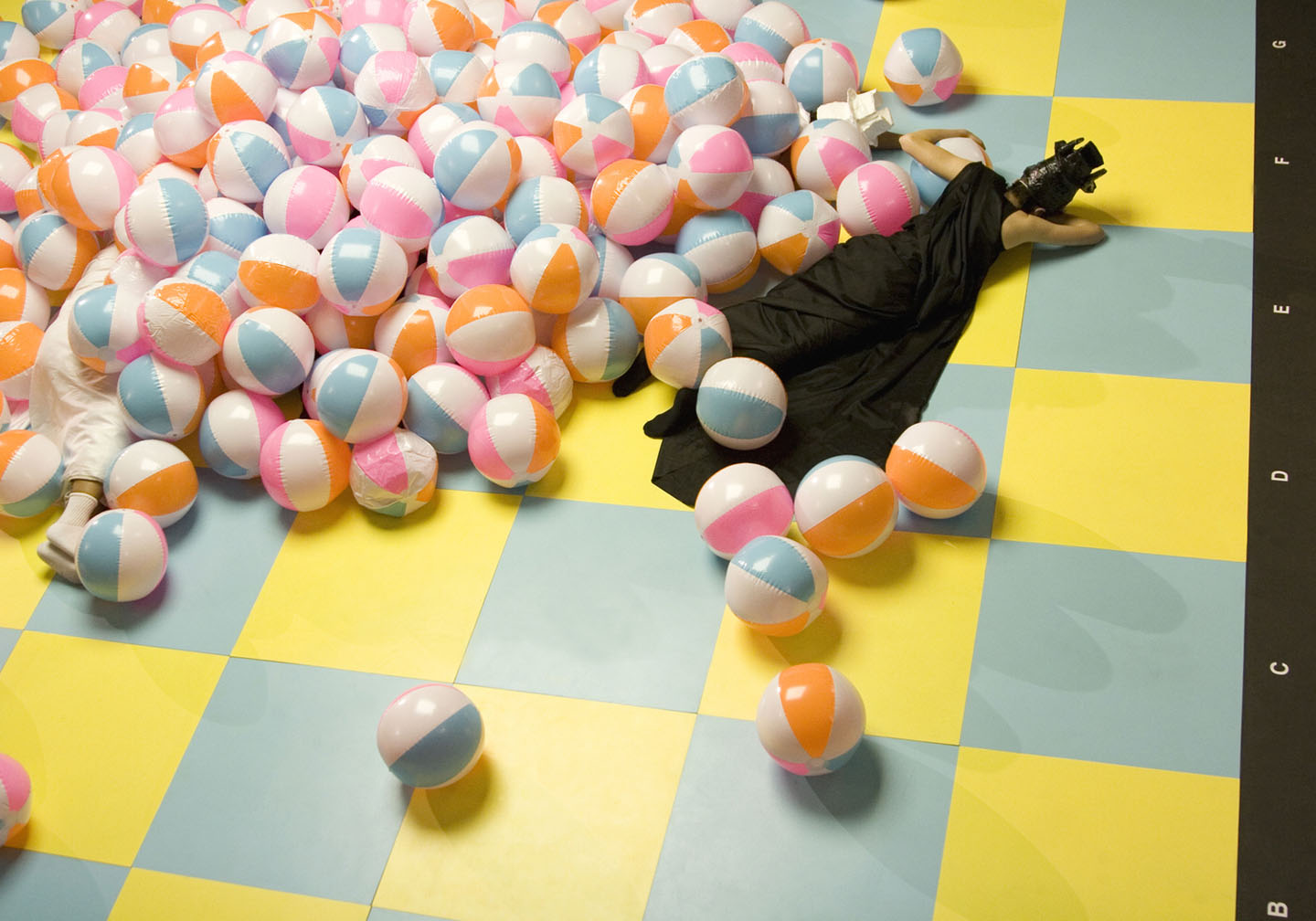Schachfeld (THE CHESSFIELD)
Schachfeld (The Chessfield), 2007
In Schachfeld (The Chessfield) we can observe a game of chess being played, and are given control over robot-like chess pieces – until suddenly they realize that they have lost control: the chess pieces have "come alive."
Schachfeld (The Chessfield) explores the relationship between those who rule and those who are ruled, with the black and white pawns deciding to defend their class interests and to unite in a revolt against the king. However, owing to their lack of experience in government and responsibility, they fail in their attempt to overthrow the ruler. As the chessboard becomes a battlefield in which societal agreements evaporate, the pawns lose control; chaos ensues, leaving all the participants to fend for themselves if they can.
Katja Loher stages a human game of chess with live figures. In doing so, she pulls the strings, like with marionettes, and thus challenges the participative role of humans. The strategic game of chess transforms into a battle between life and death and suggests an “end game” in the tradition of Beckett.
Helen Hirsch, director Museum Thun, Switzerland, 2007.
Schachfeld (The Chessfield)
2007
Production with 32 performers. 1-Channel video projection, 23:30 min
Choreography: Saori Tsukada
Audio Design: Asako Fujimoto
Script: Julia Sørensen





